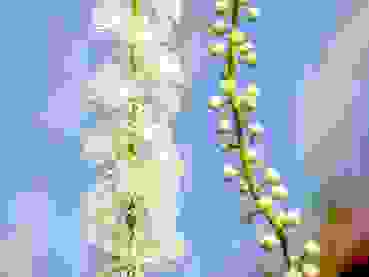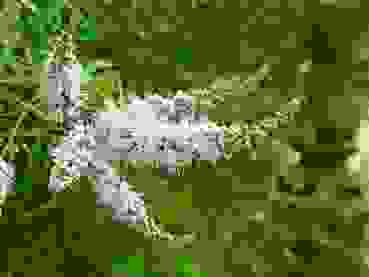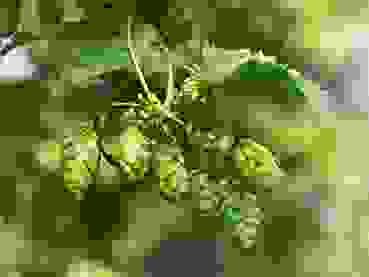
Phyto Story - St. John’s wort (Hypericum perforatum)
St. John’s wort is nature’s herbal alternative to chemical antidepressants. Its effect is well researched and has been backed up by numerous clinical studies.
St. John’s wort is a very common herbaceous wild plant that grows in many areas including in Switzerland. Numerous studies have shown that this medicinal plant is effective for treating minor to moderate episodes of depression or depressive moods. It is important to note that it is a medicinal product containing a controlled plant extract and therefore always has the same quantity of the active ingredient. Find out more here about the effect and uses of Hypericum perforatum.
October 13, 2020
Where is Hypericum perforatum most commonly found?
Perhaps without knowing it, many people have seen real St. John’s wort (Latin: Hypericum perforatum) while out walking. The shrub is found all the way from West Asia to Europe and down to North Africa. It also grows in Switzerland, Germany and Austria. It is hardy, can withstand the winter and does not have any special soil requirements. The plant is often found growing along pathways, on the sunny edges of forests and brush, in meadows that have not been excessively fertilised, and on railway embankments. The plant prefers sunny locations.
Hypericum is cultivated on an agricultural scale for the production of medicinal products. The crops are mainly found in Germany, Eastern Europe and Chile. The herb and its partially or fully blooming inflorescences are used for the production of St. John’s wort extracts.
Appearance and botanical features of St. John’s wort
There are nearly 500 different species in the Hypericum genus. The most well-known is true St. John’s wort (Hypericum perforatum), which is used for medicinal purposes. It is an herbaceous shrub and can grow to a height of up to a metre. The ovular or oblong leaves, which can reach a size of three centimetres, grow on angular, densely branched stalks. Upon closer examination, numerous translucent dots become visible on the edges and surfaces of the leaves. These are special oil glands where essential oils are found and the reason why the species is called perforatum in Latin. The leaves look as if they are perforated. True St. John’s wort has bright yellow flowers between June and August.
History of St. John’s wort
The name of the plant refers to the holiday of St. John’s Eve, which is an ecclesiastic feast on 24th June celebrating the birth of John the Baptist. St. John’s wort is in full bloom during this time. Another common name for the medicinal plant is perforate St. John’s wort, which, as the Latin name perforatum suggests, refers to the clearly visible oil glands on the buds and leaves.
Hildegard von Bingen (1098 – 1179), in fact, described the plant as “a herb to fight off dark melancholia”. Only later was this effect rediscovered and studied scientifically. Today, numerous studies have shown that it is nature’s herbal version of an effective antidepressant, which is why St. John’s wort was named “Medicinal Plant of the Year” by the Würzburger Institut für die Geschichte der Medizin in 2015.
Active ingredients and mechanism of St. John’s wort
The main active ingredients in St. John’s wort include hypericin, hyperforin, flavonoids, catechin tannins, essential oils and phenol carboxylic acids. St. John’s wort extract has a positive effect on a person’s mood and can boost motivation during emotional lows. It can also be used, for example, to treat minor to moderate depression. The effect is similar to certain chemical antidepressants. The mechanism of action has been attributed to the inhibition of neural serotonin reuptake and other neurotransmitters, among other things. The latest findings have shown positive effects on the membranes of stressed nerve cells. Researchers had long believed that hyperforin is primarily responsible for this effect, but because St. John’s wort extracts that contain very low levels of hyperforin also have an antidepressant effect, this thesis is no longer tenable. Presumably, there is a combination of several plant substances, which also include hypericin, that are probably responsible for the effect. This is why the complete extract of St. John’s wort is considered an active agent.
Researchers studying medicinal plants are in agreement that taking St. John’s wort extracts containing a high quantity of hyperforin can result in interactions with other drugs. The increase in certain enzymes and transporters in the human liver causes certain other drugs to be metabolised more quickly. This is particularly the case for certain antibiotics and steroid hormones, for example. The hyperforin content in the extract depends on numerous factors, such as the type of hypericum that is cultivated, growing conditions, harvesting time, cutting height of the plant as well as the extraction method. So it is important to ensure taking only high quality medicinal St. John’s wort products.
Uses for St. John’s wort
Medicinal products containing Hypericum perforatum extracts are primarily used to treat episodes of depression and other depression disorders. However, there are other internal and topical uses for St. John’s wort oil as well.
St. John's wort for episodic depression and depressiv moods
The effect of St. John’s wort on medically diagnosed minor to moderate depression has been documented in numerous studies. When taken regularly, products containing St. John’s wort have a calming, balancing effect and can help raise a person’s spirits and motivation. Typical symptoms of depression, such as despondency, or a feeling of emptiness or joylessness, can be improved in many cases. This is also true during phases of depression caused by hormone changes; for example, during menopause or at certain times during a woman’s menstrual cycle.
Hypericum perforatum for psycho-vegetative disorders
Emotional problems, overwork, pressure and other serious stresses can sometimes lead to what are known as psycho-vegetative symptoms. These include muscle tensions, muscle cramps, heart palpitations, headaches, migraines or sleep disorders.
Hypericum products to treat anxiety, restlessness or nervousness
Hypericum products not only have an antidepressant effect, but they can also help alleviate anxiety, irritability and nervousness in many cases. The effect of St. John’s wort products usually sets in only after they have been taken regularly for a period of two to three weeks.
Topical use of oils containing St. John's wort
St. John’s wort oil (also known as red oil) is produced by infusing vegetable oil with the flowers of the St. John’s wort plant. Because it contains hypericin, the oil turns red, especially when exposed to sunlight. St. John’s wort oil is traditionally applied to the skin to treat sprains, injuries, bruises, sunburn, rheumatism and gout. Sometimes St. John’s wort oil is also applied to skin blemishes or dry skin and scars.
Please note: Herbal remedies may also have interactions and side effects. Therefore, please consult your doctor or pharmacist if you have any questions. If you are already taking any other antidepressants or medications, you should always consult a doctor before taking St. John’s wort.
Topics
Filter blog posts by topic by clicking on the tags.





